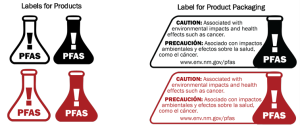Massachusetts Introduces Comprehensive Children’s Product Chemicals Regulation Bill
On November 10, 2025, a Massachusetts state senator introduced a bill that would create an extensive regulatory program to restrict the use of chemicals of concern—including PFAS—in children’s products sold in the state.
If enacted, SB 2660 would prohibit the use of intentionally added PFAS in children’s products above a total organic fluorine threshold set by the Massachusetts Department of Environmental Protection (MassDEP). It would also allow MassDEP to screen chemicals, identify priority substances, and require their disclosure and eventual substitution in children’s products.
Children’s products are broadly defined as items “intended, made or marketed for use by children 12 years of age or under,” including toys, clothing, cosmetics, and jewelry, with specific exemptions (e.g., electronics and bicycles). The bill applies only to new products. SB 2660 adopts a familiar definition of PFAS: “any member of the class of fluorinated organic chemicals containing at least one fully fluorinated carbon atom.”
Regulatory Structure
SB 2660 would require that MassDEP create two primary public lists of chemicals:
- Chemicals of concern in children’s products
- High priority chemicals
The chemicals of concern list would include a broad set of chemicals that may pose hazards in children’s products. Listing would trigger manufacturer reporting.
The high priority chemicals list would be a narrower subset of chemicals of concern, elevated based on evidence of exposure or other regulatory triggers. Placement on this list would initiate stronger obligations, including substitution and, eventually, sale prohibitions.
Chemicals of Concern List & Requirements
A chemical may be placed on the chemicals of concern list if it is identified as:
- A carcinogen or mutagen
- Persistent or bio-accumulative and toxic (PBT)
- An endocrine disruptor
- A reproductive or developmental toxicant
- A neurotoxicant
- A respiratory or skin sensitizer
- Any other chemical of equivalent concern
Within 180 days of listing, and biennially thereafter, manufacturers of children’s products containing a chemical of concern above de minimis levels would be required to notify MassDEP. Notifications would be made available to the public, and would be required to include:
- Chemical name
- Product description
- Brand, model, and UPC (if applicable)
- Chemical function in the product
- Amount of the chemical (ranges permitted)
- Company and contact information
High Priority Chemicals List & Requirements
MassDEP would be allowed to elevate a chemical of concern to the high priority list if:
- The chemical or its metabolites are found in humans through biomonitoring
- The chemical is detected in household dust, indoor air, drinking water, or other home environments
- The chemical is shown to release from a product, leading to likely exposure to children
- The chemical or products containing it are restricted in another state
Manufacturers of children’s products containing a high priority chemical would be required to notify downstream sellers within 180 days of listing.
Within three years of listing, high priority chemicals would be required to be removed or substituted in children’s products that are (1) mouthable, (2) personal care products or cosmetics, or (3) intended for children under three.
Within five years, high priority chemicals would be prohibited in all children’s products unless preempted by federal law or if MassDEP determines that a ban would pose an unreasonable risk to public health, safety, or welfare.
Chemical Substitutions
SB 2660 also authorizes MassDEP to publish a safer alternatives list. Manufacturers would be freely allowed substitute high priority chemicals with listed safer alternatives.
If a manufacturer chooses a substitute not on the safer alternatives list, MassDEP approval would be required. Manufacturers would be required to explain how the product is less hazardous, and MassDEP may require submission of a hazard assessment.
Manufacturers may not replace a high priority chemical with a chemical of concern.
Exceptions and Extensions
SB 2660 includes several provisions to ease compliance:
- MassDEP may grant temporary or permanent waivers from substitution requirements if exposure is not reasonably anticipated.
- Manufacturers with 25 or fewer employees may apply for a two-year extension to the deadlines resulting from high priority listing.
- MassDEP may not impose a lower allowable level than a federal consumer product safety standard unless it completes a rulemaking.
- Additional exemptions may be established by regulation.
Enforcement and Other Provisions
MassDEP would have authority to adopt rules, test children’s products, and impose civil penalties of $5,000 per violation (or up to $10,000 for repeat violations).
Every three years, MassDEP would be required to publish a report on toxic chemicals in children’s products, including reporting outcomes and policy recommendations.
* * *
Verdant Law closely monitors state-level chemical regulatory bills like SB 2660, including the rapidly expanding wave of PFAS-focused legislation. Our team is ready to help your company assess potential compliance obligations, stay ahead of emerging requirements, and prepare for potential impacts across product lines and supply chains.

